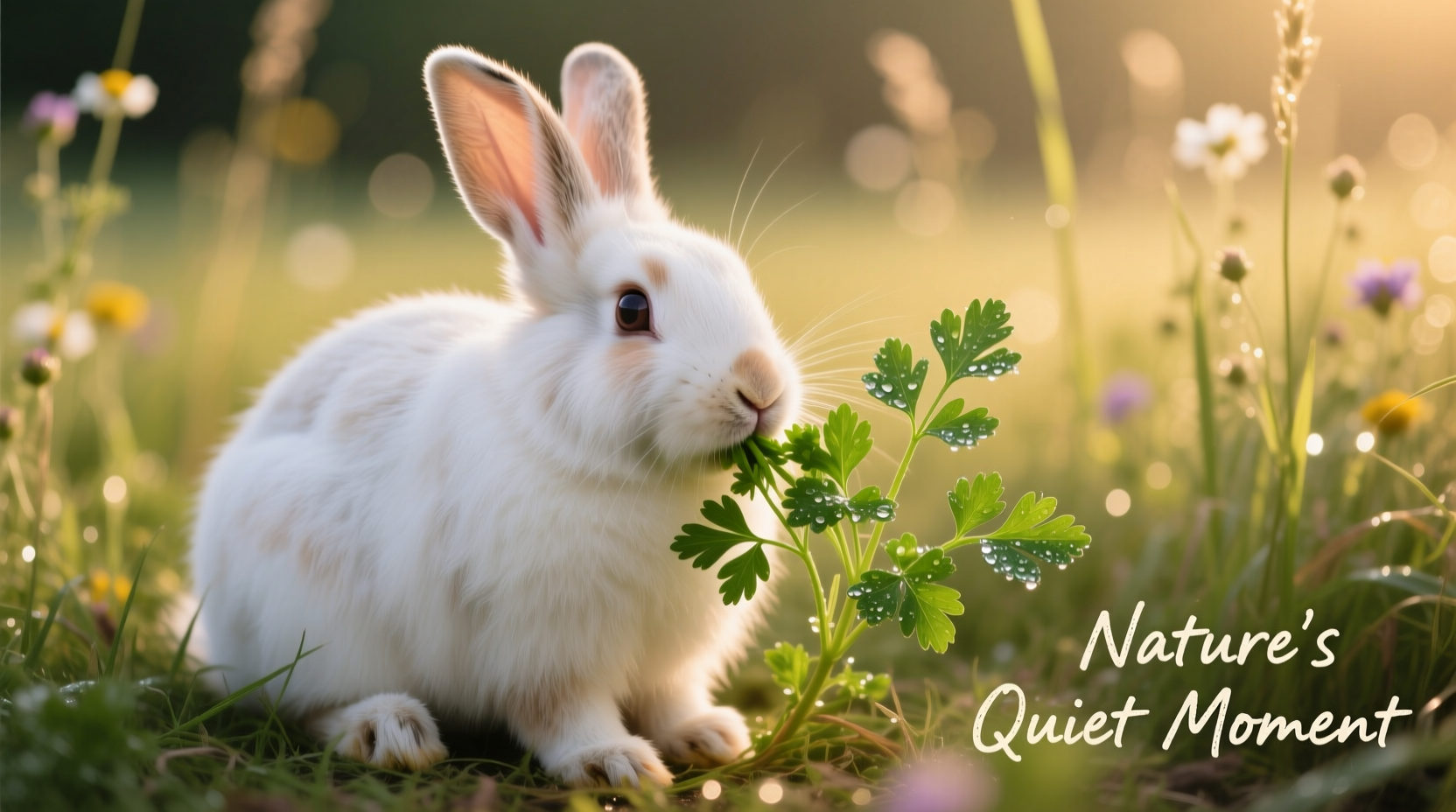Why Parsley Matters in Your Rabbit's Diet
Many rabbit owners wonder if this common herb belongs in their pet's menu. As a nutrient-dense leafy green, parsley offers valuable vitamins while presenting some considerations that responsible owners should understand. Getting this balance right supports your rabbit's digestive health and overall wellbeing.
Nutritional Powerhouse: What Parsley Brings to the Hutch
Parsley isn't just a garnish—it's packed with nutrients essential for rabbit health. This herb provides significant amounts of vitamin A for vision and immune function, vitamin C for tissue repair, and vitamin K for proper blood clotting. The high water content (approximately 88%) also contributes to hydration, which is crucial for preventing urinary tract issues in rabbits.
| Nutrient | Amount per 100g | Rabbit Health Benefit |
|---|---|---|
| Vitamin A | 5054 IU | Supports vision and immune system |
| Vitamin C | 133 mg | Aids tissue repair and antioxidant protection |
| Vitamin K | 1640 mcg | Essential for proper blood clotting |
| Calcium | 138 mg | Necessary in moderation for bone health |
| Oxalates | 136 mg | Requires monitoring to prevent urinary issues |
Data sourced from the USDA FoodData Central database, which provides comprehensive nutritional analysis of food items.
Safe Feeding Protocol: How Much Parsley Is Too Much?
Understanding appropriate portions prevents potential health complications. The ideal feeding schedule follows this progression:
- Introduction phase (first week): Offer just 1-2 small leaves to monitor for digestive tolerance
- Establishment phase (weeks 2-3): Gradually increase to 1 sprig per 2 lbs of body weight
- Maintenance phase: Feed parsley 2-3 times weekly as part of a rotating selection of 5-6 different leafy greens
This gradual introduction timeline, recommended by the House Rabbit Society, allows your rabbit's sensitive digestive system to adapt while minimizing risks of gastrointestinal upset.

When Parsley Becomes Problematic: Important Limitations
While generally safe, parsley requires special considerations in certain situations:
- Young rabbits under 12 weeks: Avoid parsley completely as their digestive systems are still developing
- Rabbits with urinary issues: Limit or eliminate parsley due to its oxalate content which can exacerbate calcium-related urinary problems
- Pregnant or nursing does: Reduce frequency to once weekly as excessive vitamin K may affect blood clotting
- Overweight rabbits: Prioritize lower-calorie greens like cilantro while reducing parsley portions
These context-specific boundaries come from clinical observations documented by the American Veterinary Medical Association regarding rabbit nutrition and digestive health.
Practical Implementation: Making Parsley Part of Your Routine
Follow these steps for safe parsley integration:
- Source selection: Choose organic parsley when possible to minimize pesticide exposure
- Preparation: Wash thoroughly under running water, removing any yellowed or damaged leaves
- Combination strategy: Mix parsley with other safe greens like romaine lettuce and cilantro
- Monitoring: Watch for 24 hours after first feeding for signs of digestive upset
- Rotation: Change your leafy green selection daily to provide dietary variety
Beyond Parsley: Building a Balanced Rabbit Diet
Parsley should represent only a small portion of your rabbit's fresh food intake. A complete diet includes:
- Unlimited grass hay (80-90% of diet)
- Measured high-quality pellets (1/4 cup per 5 lbs body weight)
- Daily variety of 5-6 different leafy greens
- Occasional herb and vegetable treats
When rotating greens, consider these parsley alternatives that provide similar nutritional benefits with different risk profiles:
- Cilantro (lower oxalates, excellent digestive support)
- Italian parsley (milder flavor, slightly lower oxalate content)
- Romaine lettuce (higher water content, lower calcium)
- Spring greens (gentler on sensitive digestive systems)
Recognizing Problems: When to Consult Your Vet
Monitor your rabbit for these signs that may indicate parsley isn't agreeing with them:
- Decreased or absent fecal production
- Cloudy or thickened urine
- Reduced appetite lasting more than 12 hours
- Excessive lethargy or hiding behavior
If you notice any of these symptoms, discontinue parsley immediately and consult your exotic veterinarian. Early intervention prevents minor digestive upsets from developing into serious gastrointestinal stasis.











 浙公网安备
33010002000092号
浙公网安备
33010002000092号 浙B2-20120091-4
浙B2-20120091-4